MSI Cubi 2 Plus vPro Skylake mini-STX PC Review
by Ganesh T S on April 27, 2016 8:05 AM ESTPower Consumption and Thermal Performance
The power consumption at the wall was measured with a 1080p display being driven through the HDMI port. In the graphs below, we compare the idle and load power of the MSI Cubi 2 Plus vPro with other low power PCs evaluated before. For load power consumption, we ran Furmark 1.12.0 and Prime95 v27.9 together. The numbers are typical for the combination of hardware components in the machine.


The MSI Cubi 2 Plus vPro is able to sustain a much higher load (despite having a processor with the same TDP as the Cubi 2 Plus).
Our thermal stress routine starts with the system at idle, followed by 30 minutes of pure CPU loading. This is followed by another 30 minutes of both CPU and GPU being loaded simultaneously. After this, the CPU load gets removed, allowing the GPU to be loaded alone for another 30 minutes. The various clocks in the system as well as the temperatures within the unit are presented below. Starting with this review, we are also presenting the instaneous power consumption numbers of the internal components as reported by HWiNFO.
According to the official specifications, the junction temperature of the processors is 100 C. While the Core i3-6100T is kept comfortably below that limit, the thermal solution is just about sufficient for the Core i5-6500T. Note that the CPU package power starts going up rapidly above 60W for the vPro system, but 'power throttling' kicks in before thermal throttling to keep things within limits.
Another important aspect to keep note of while evaluating fanless PCs is the chassis temperature. Using the Android version of the FLIR One thermal imager, we observed the chassis temperature for the vPro model after the CPU package temperature reached the steady state value in the above graph.
We have additional thermal images in the gallery below.
The active thermal solution ensure that the chassis temperature doesn't become a big concern even under very heavy loading conditions.


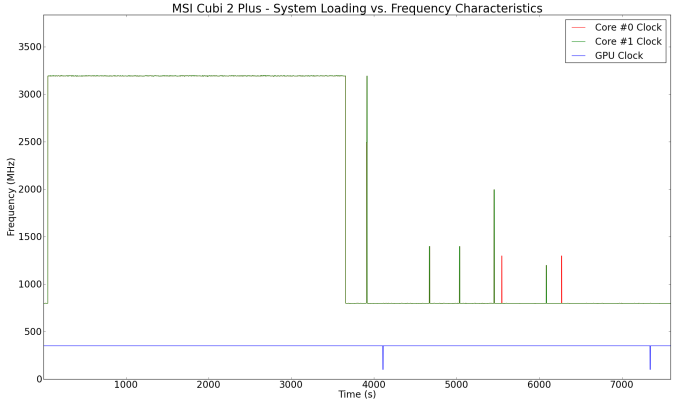
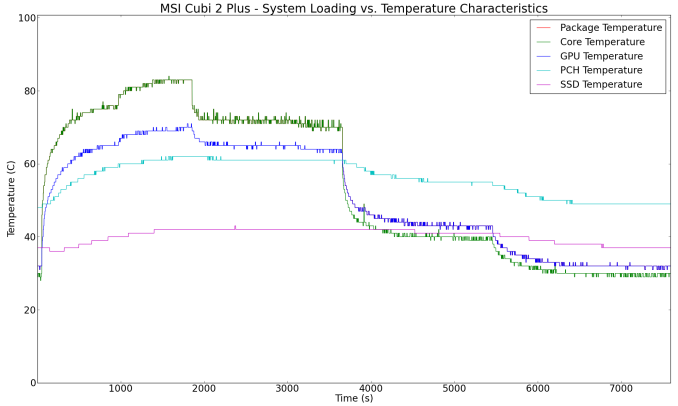
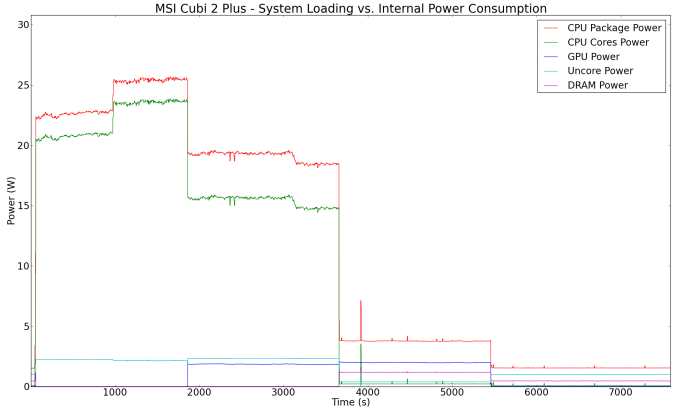
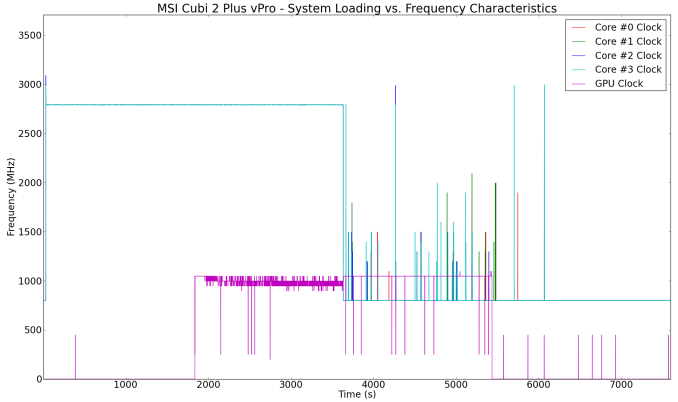
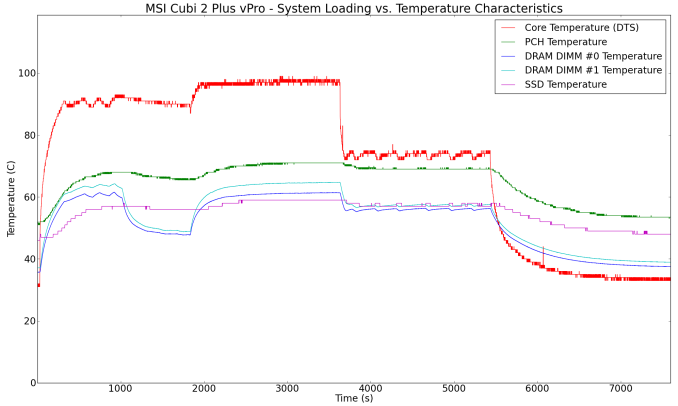
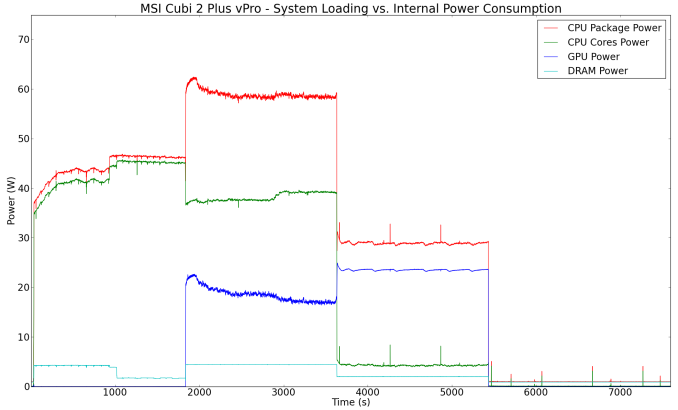
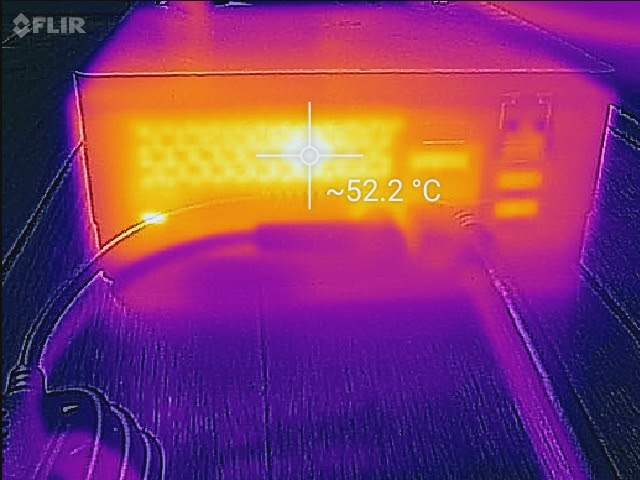














24 Comments
View All Comments
ganeshts - Wednesday, April 27, 2016 - link
Yes, but I have seen that type of behavior (load power higher than PSU rating) in some of the other mini-PCs that we have evaluated before.KateH - Wednesday, April 27, 2016 - link
The 90W rating is on the DC side; the draw from the wall will always be higher than the system consumption due to heat losses in the power supply. The 102W reading on the AC side means the system is probably consuming around 80-85W DC.BrokenCrayons - Thursday, April 28, 2016 - link
Thanks both of you. I'd neglected to take into account inefficiencies in the PSU. Still, that is cutting things a bit close. An inexpensive PSU running at 80-90% of its max rated output might not last very long under adverse conditions like say, sitting under a desk in a hot room on top of a shaggy carpet.ganeshts - Thursday, April 28, 2016 - link
Well, I suspect no one is going to run Prime 95 + Furmark 24x7 on their PC :) It is just a check for how much the max. power consumption of the unit is going to be.HomeworldFound - Wednesday, April 27, 2016 - link
All of these devices are a let down to me, I want one yet it fails to meet my expectation every time. So many different Intel configurations exist that the market is flooded by products that barely differ outside of the case. Why do none of these manufacturers team up and offer a better alternative to the Intel GPU even in the larger more accommodating products?I guess what I have to ask is if I want something like this with the ability to game, is AMD really ahead of the competition or will they be with an improved CPU/GPU combo?
abufrejoval - Saturday, April 30, 2016 - link
I guess the biggest issue is about what you consider "game ready". To you it may mean the equivalent of a GTX 980 ti or even a dual AMD Fury or about 300 Watts of TDP.Others are happy enough with the on-board GPU or would love to see an AMD Nano (175 Watts) matched to this form factor.
This large range of TDP cannot be solved with a single physical design in this form factor and the result is loss of economy of scale, which is what these systems are mostly about: Selling large volumes.
And that unfortunately means that the TDP is pretty much set in stone and either excludes an external GPU or uses one so weak, it doesn't do any better than what an APU or Intel HD graphics can deliver by themselves.
AMD is ahead only in terms of the openness of their platform, of where they could go theoretically as proven out by the PS4 and Xbox 2 designs.
In that theory someone could go and have AMD design a custom SoC a couple of notches above the likes of a PS4, using either 16 GB GDDR5 for OS and graphics or even 16GB of HBM2, 8 juicy CPU cores (4GHz class) and Fury class graphics with a combined TDP of 200 Watts and cooled by something really massive and slow moving.
At the space and weight equivalent of a gallon of milk you could have a gaming PC, that's even portable (thanks to the handle on that milk bottle) from room to room or party to party.
Better yet, I'd like to be able to stack two, four (or eight?) of these together, to build an even larger NUMA/SLI rig.
PCs are still designed far too CPU centric, even if GPUs have long since taken over a much larger part of the silicon real-estate and the value creation.
Let's move what's left of the PC onto the GPU board (or SoC) and turn the motherboard into a passive backplane with slot form factor sockets for additional (2-4/8) APUs.
And make the memory system GPU centric with the CPU being allowed to use some of that to bootstrap the games (or even run Excel/SAP during business hours).
AMD could execute that vision, if somebody were to provide the required cash up front. The result would be an open PC, which unfortunately means that recovering the invest could be much more difficult than it already is on locked-in systems like the PS4 or the Xbox.
RayRoy - Thursday, April 28, 2016 - link
Will there be a Skylake U model in the original Cubi size?ganeshts - Thursday, April 28, 2016 - link
I have pinged MSI, but they have neither confirmed nor denied plans for a Skylake Cubi-mini. We will probably know more at Computex. If it is not shown at Computex, I think it will not be coming.potf - Thursday, April 28, 2016 - link
Sorry, only thing missing imho in the article photos is where is the hdd if you want to put one ?I would guess on the bottom as there seems to be room for it.
Asus competition the vc65 / VC65R has at least 2 2.5 hdd slots , 4 in some VC65R versions, and an optical drive (but have no M2)
MSI cubi broadwell small factors had the option to have msata plus 2.5 drive, and it seems to me that the bottom would be removable in the 2 plus version also, in order to choose between a smaller form factor and more ports, but now it only seems that is a differentator between normal and pro version.
Otherwise, still waiting to see how MSI will sell them in europe : for now only ref is MSI Cubi 2 Plus-B3610T4GXXDXX Intel Core i3-6100T 2x 3.20 GHz, 4GB RAM, 128GB SSD, no OS and I do not know whether the ssd is in M2 factor or 2.5. Street price is around 500 euros vat included (400 USD equivalent).
The nice thing with selling them barebones is the flexibility, the less nice one is that T processors are less easy to find than standard cpus (55-65W).
ganeshts - Thursday, April 28, 2016 - link
It is is one of the teardown gallery photos, where the removable bottom part is shown separately, and there is a rectangular 'hole' corresponding to where the 2.5" drive is mounted. The 'proprietary' cable to connect the drive to the main board on the bigger segment is supplied along with the unit (you can see it in the package photo on the right side)